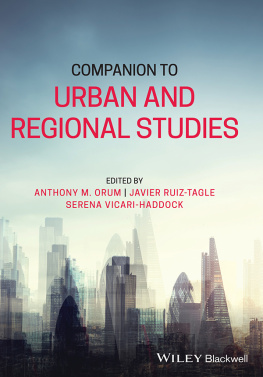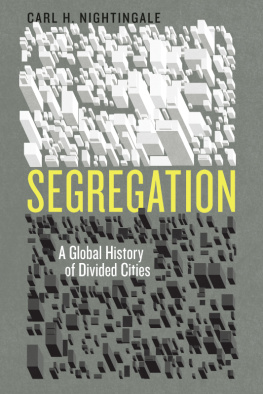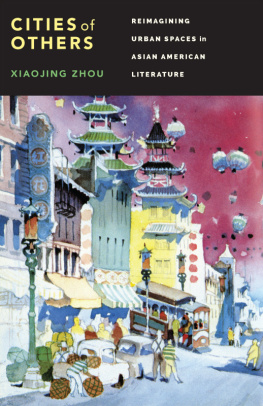Racial Cities
Going beyond race-blind approaches to spatial segregation in Europe, Racial Cities argues that race is the logic through which stigmatized and segregated Gypsy urban areas have emerged and persisted after World War II. Building on nearly a decade of ethnographic and historical research in Romania, Italy, France and the UK, Giovanni Picker casts a series of case studies into the historical framework of circulations and borrowings between colony and metropole since the late nineteenth century.
By focusing on socio-economic transformations and social dynamics in contemporary Cluj-Napoca, Pescara, Montreuil, Florence and Salford, Picker detects four local segregating mechanisms, and comparatively investigates resemblances between each of them and segregation in French Rabat, Italian Addis Ababa, and British New Delhi. These multiple global associations across space and time serve as an empirical basis for establishing a solid bridge between race critical theories and urban studies.
Racial Cities is the first comprehensive analysis of the segregation of Romani people in Europe, providing a fine-tuned and in-depth explanation of this phenomenon. While inequalities increase globally and poverty is ever more concentrated, this book is a key contribution to debates and actions addressing social marginality, inequalities, racist exclusions, and governance. Thanks to its dense yet thoroughly accessible narration, the book will appeal to scholars, undergraduate and postgraduate students, postdoctoral researchers, and equally to activists and policy makers, who are interested in areas including: Race and Racism, Urban Studies, Governance, Inequalities, Colonialism and Postcolonialism, and European Studies.
Giovanni Picker is a Marie-Skodowska Curie Research Fellow at the University of Birmingham School of Social Policy, UK.
Routledge Advances in Sociology
For a full list of titles in this series, please visit www.routledge.com/series/SE0511
204 The Third Digital Divide
A Weberian Approach to Digital Inequalities
Massimo Ragnedda
205 Alevis in Europe
Voices of Migration, Culture and Identity
Edited by Tzn Issa
206 On the Frontlines of the Welfare State
Barry Goetz
207 Work-Family Dynamics
Competing Logics of Regulation, Economy and Morals
Edited by Berit Brandth, Sigtona Halrynjo and Elin Kvande
208 Class in the New Millennium
Structure, Homologies and Experience in Contemporary Britain
Will Atkinson
209 Racial Cities
Governance and the Segregation of Romani People in Urban Europe
Giovanni Picker
210 Bourdieusian Prospects
Edited by Lisa Adkins, Caragh Brosnan and Steven Threadgold
211 Alienation and Affect
Warren D. TenHouten
Racial Cities
Governance and the Segregation of Romani People in Urban Europe
Giovanni Picker

First published 2017
by Routledge
2 Park Square, Milton Park, Abingdon, Oxon OX14 4RN
and by Routledge
711 Third Avenue, New York, NY 10017
Routledge is an imprint of the Taylor & Francis Group, an informa business
2017 Giovanni Picker
The right of Giovanni Picker to be identified as author of this work has been asserted by him in accordance with sections 77 and 78 of the Copyright, Designs and Patents Act 1988.
All rights reserved. No part of this book may be reprinted or reproduced or utilised in any form or by any electronic, mechanical, or other means, now known or hereafter invented, including photocopying and recording, or in any information storage or retrieval system, without permission in writing from the publishers.
Trademark notice: Product or corporate names may be trademarks or registered trademarks, and are used only for identification and explanation without intent to infringe.
British Library Cataloguing in Publication Data
A catalogue record for this book is available from the British Library
Library of Congress Cataloguing in Publication Data
A catalog record for this book has been requested
ISBN: 978-1-138-80878-2 (hbk)
ISBN: 978-1-315-75046-0 (ebk)
Typeset in Times New Roman
by Out of House Publishing
Cover photo: Doi Moldoveni neighbourhood, Clrai, Romania. Photo by Catalin Berescu
To Arn
To Piero
Contents
List of illustrations
Figures
Tables
Eric Fassin
In Europe, we are usually told that race belongs to the past. It supposedly disappeared after World War II, along with Nazism. This narrative is meant to suggest that race has no place in our democratic societies: we do not do race! Never mind Csaires scathing accusation, in the 1950 Discourse on Colonialism, that Hitler only applied to Europe colonialist procedures which until then had been reserved exclusively for the Arabs of Algeria, the coolies of India, and the blacks of Africa, and never mind that these did not end in 1945 either. It is true that in postcolonial Europe, biology is not the dominant discourse any longer, although it is also true that culture may play a similar role. Of course, it is hard not to acknowledge the reality of everyday racism, and the rise of political xenophobia that feeds it: few would dare to argue today, as was common a few decades ago, that such bigotry is alien to our culture, as if the United States had a monopoly on the Negro problem. But many, in France and elsewhere, still refuse to use the concept of race for fear that this might reinforce racist discourse. Academic color-blindness thus makes it very difficult to analyse the politics of race in Europe today.
At the same time, the persistence of traditional anti-Gypsy feelings and the proliferation of a new political Romaphobia also make it well-nigh impossible not to discuss race. Not only does this concern specific European countries; it has also become an issue for the European Union as such, at least since Romania and Bulgaria became members in 2007. Giovanni Pickers important book on racial cities thus provides valuable tools for making sense of race in Europe today, starting from the political treatment of the Roma. However, this is not the study of a racial (or even racialized) group; nor is it really about racism in the usual sense of the term (bigotry). The argument focuses on race proper. These distinctions are important. The first one shifts the problem from the Romani people to what I prefer to call the Roma question which ensures that the academic analysis of race does not replicate the political gesture that racializes these populations. The second one implies that the focus is not on immemorial social prejudices but on current political practices racial policies and policing targeting the Roma understood in historical terms. This double move is a departure from approaches in terms of culture (of the Roma on the one hand, of racists on the other): Pickers object is political in a Foucauldian sense.
Indeed, while empirically informed, Racial Cities is not founded on an empiricist approach to the Roma question. It relies on a twofold theoretical and methodological elaboration that has to do both with time and space. While the spatial dimension is apparent in the subtitle (segregation in urban Europe), the temporal one is developed in the first chapter of the book. Gypsy urban areas (GUA) are not only geographical, but also historical nodes. Analyzing Rabat under French domination, New Delhi at the time of the British Empire, and Addis Ababa subjected to Italian rule helps Picker set the stage for his study of the mechanics of race in urban settings that have equally defined the Gypsies from the end of the nineteenth century to this day. This chronological construct makes it possible to define or redefine racial segregation beyond the specificities of the Roma question. This book thus contributes to discussions about the multiple connections between colony and metropole and their legacies in a postcolonial world by opening new ground. The argument does not only concern todays non-White descendants of the colonized natives of yesterday; it actually addresses race in general not a race in particular: in a counterintuitive demonstration, the Roma are thus inscribed in a postcolonial logic.
Next page







